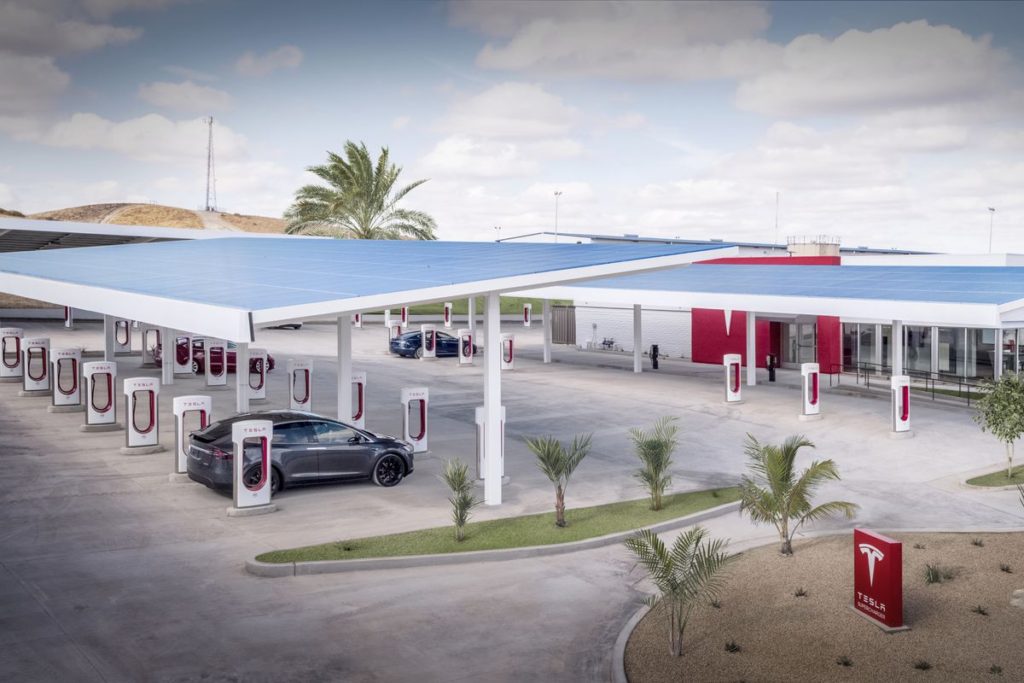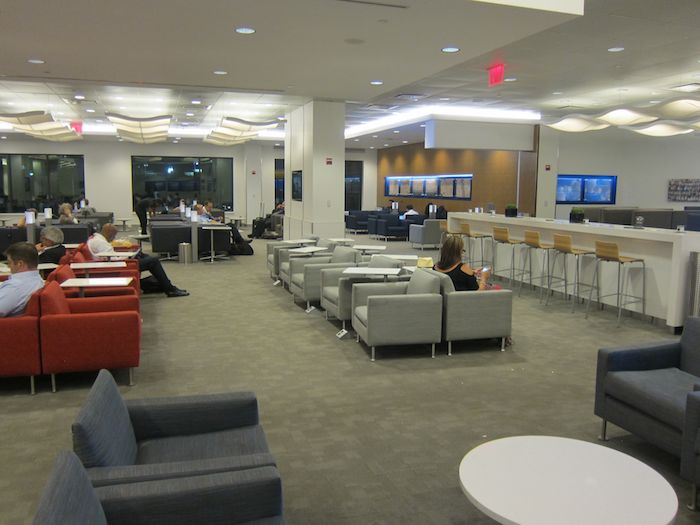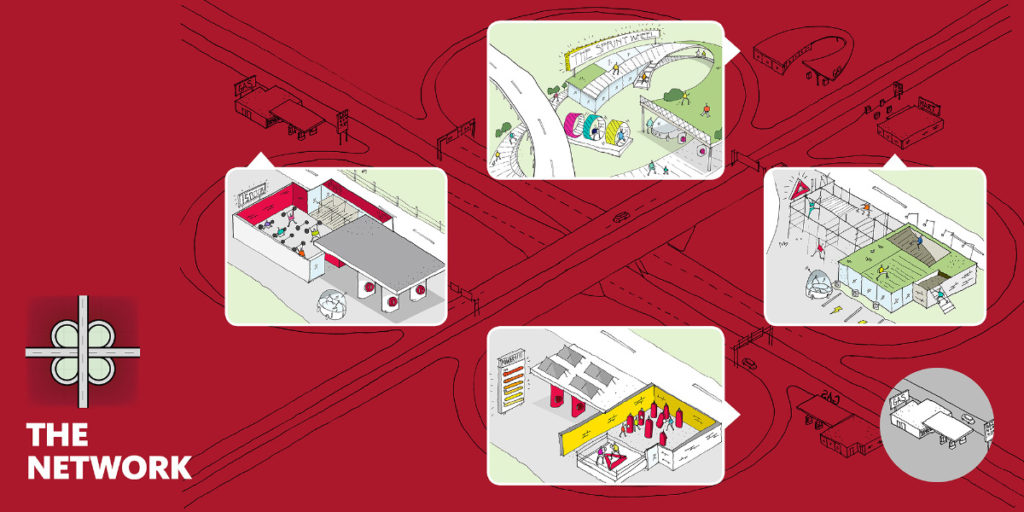What will electric vehicle charging centers located along highways look like in the future?

That remains to be seen but gas stations are clearly not a good model to replicate. A better model is the retail and services model that has become popular at airports around the world.
Charging Is A Different “Refueling” Paradigm
Gas stations are a place we go to spend typically about 5-8 minutes to fill our gas tank. That time spent could be 10-15 minutes or more if there is a line of cars waiting to fill up and/or you use the restroom, buy a drink or food from the associated convenience store or quick-service restaurant, and pay inside instead of at the pump.
But most often our goal at a gas station is to stop, fill up, and get back on the road as quickly as possible. Speed, not enjoying the experience is our goal. After all, does anyway enjoy go ing to the gas station, except of course for the delightful smell of gasoline, burnt coffee, and watching over-cooked hot dogs rolling on the warmer? (OK, in fairness to the modern convenience store chain environment, this description is outdated and unfair — but many drivers are not ecstatic about hanging out a gas station for longer then they need to.)
ing to the gas station, except of course for the delightful smell of gasoline, burnt coffee, and watching over-cooked hot dogs rolling on the warmer? (OK, in fairness to the modern convenience store chain environment, this description is outdated and unfair — but many drivers are not ecstatic about hanging out a gas station for longer then they need to.)
Because charging your EV at an DC fast charger typically takes anywhere from 15 to 45 minutes, the mindset for EV drivers is to plan around the charging time to do something else WHILE your EV charges. This includes shopping, eating at a restaurant, getting coffee and more.
Mega-Charging Centers: Human and Vehicle Recharging
The model of the future may be mega-charging centers — with perhaps 50-200 fast chargers — will be a combination vehicle and human recharging centers with restaurants, stores, entertainment, car detailing, personal care services and more. They will be powered by combinations of the local grid and their own massive microgrids. These mega charging/leisure centers will be fewer in number than gas stations, but located very strategically.
Tesla, with its Kettleman City (between Northern and Southern California on Interstate 5) SuperCharger center + lounge is a start in the right direction. But even it has the feeling of adding a lounge as a secondary thought to a gas station (with the pumps replaced by charging stations).
Instead, the future of these mega-charging centers will find that the amenities become the draw first and foremost for the humans and the charging stations are the secondary, albeit necessary, activity for the electric vehicles. The model will based on the retail and services model that has become a huge business at airports around the globe.
Generation Research, a travel retail market research specialist, estimated the market’s value at $63.5 billion in 2014, and forecasts that it will grow to $85 billion in 2020. In Singapore, for example, sales at the Changi International Airport were $1.6 billion (US) in 2016.
Airport retail and services are the model for mega EV charging centers, especially those along major highway and autobahn corridors, for three main reasons:
1. Intent: We go to airports because we have to, not necessarily because we want to (except for the idea of flying off to some fabulous destination). The experience for many travelers is stressful, hectic and not very pleasant. So the opportunity to reward yourself with a nice meal and/or beverage, some shopping and even personal care takes some of the dread out of the airport experience.
Similarly, driving 6 hours to grandma’s with the kids saying “I’m hungry,” “I have to go to the bathroom,“ and repeatedly asking “When will we get there?” is not everyone’s ideal experience. Turning this into a pleasant one is the future opportunity with “mega-recharging centers.”
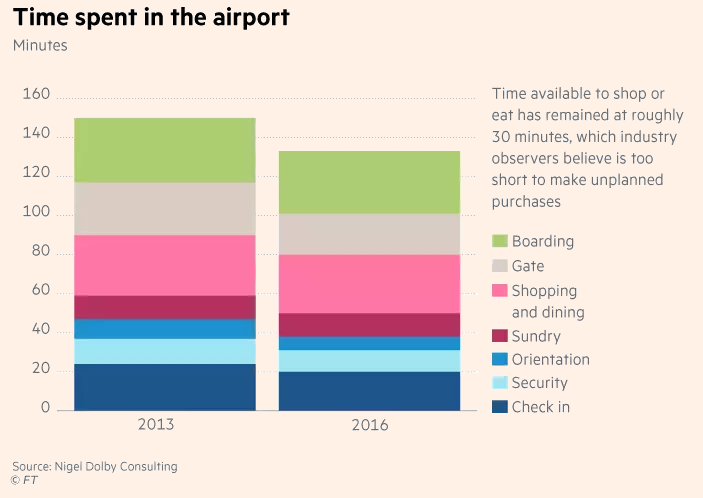
2. Time: The average time spent at an airport (from arrival until an aircraft’s doors are closed), according to Nigel Dolby, a commercial consultant to the airport industry, was 133 minutes in 2016. But the time available to shop and dine was roughly 30 minutes.
These mega-recharging centers will have DC fast charging stations that will be able to charge most EVs either to maximum range or the range needed to reach the final destination in 15 minutes to an hour. But similar to the spare time we have at airports, 30-45 minutes is probably a typical future time frame that allows a driver and their passengers to get something to eat, drink, use the restroom and perhaps shop or take advantage of various services and amenities – and charge their EV.
3. Wants and Needs: Whether at the airport or on a long drive of many hours, humans simply have basic needs to use the restroom and to replenish their bodies with food and beverages. But we also have wants, activities that we don’t need to do but that we enjoy or want to do to reward ourselves. These can include everything from a enjoying a really nice meal to shopping or getting a massage.
Amenities and Services That Mega-Recharging Centers Will Include in the Future
With that background, the following are the likely (and mostly obvious) types of services and amenities that will form the foundation of future mega-recharging centers, especially those along long-distance highway routes:
The Expected Offerings:
- Restaurants: Food service is the most obvious amenity, but we will see several national chains modify their offerings especially for the 30-minute charging customer, like Chili’s has done with their Chili’s Too offering at airports. Expect to see the usual fast-food chain restaurants, but in the US, for example, expect to see more upscale quick service chains such as Panera Bread, Chipotle, Panda Express, Shake Shack and others be key staples of these centers. These restaurants may also deliver to the co-located re-charging center lounges/clubs. (see below)
- Coffee Shops: A core amenity will of course be coffee and tea shops, but they will be more like lounges with work stations, free WiFi and large clean bathrooms.
- Juice and Yogurt Bars: A no-brainer offering for those seeking a healthier drink or snack.
The New/Future Offerings:
- Airport-like Lounges/Clubs: If you travel frequently by air, airline club lounges are an oasis from the masses in the terminal. Beyond the lounges operated by airlines, there are a growing number of independent lounges coming to many airports. These include, for example, Priority Pass, AirSpace Lounge (a new company) and American Express-owned The Centurion Lounge. Look to these and other operators to expand into the recharging center business and form partnerships with automakers and charging networks. Owners of luxury brand EVs may get complimentary access to these clubs, pay a discounted membership fee or gain access with a status-level credit card.
- Auto/Energy Storage Showrooms & Test Drives: Tesla and Lincoln have already opened showrooms, often at upscale malls. Customers can view and sit in cars, talk to an associate, see accessories and options and purchase branded gear. Lincoln, with its Experience Centers, has taken it up a notch and added demonstrations on candle-making, sushi and sake pairings and even salsa dancing. Look to the automakers to open immersive showrooms to enhance their brands and educate customers on new models and features. Additionally, as many auto companies enter the energy storage business, look for short demonstrations of home energy products to become key aspects of these showrooms. Lastly, while your car is charging, why not take your family for a test drive in that new electric crossover you’ve been eyeing?

- Car Detailing: While you wait, have your car washed, waxed and detailed. Have your tire tread and air level checked and tires rotated, windshield washer fluid filled, etc. Look for major oil and auto repair businesses to pivot and enter this “spa for cars” market.
- Yoga and Stretching: While Reebok and the architecture/design firm of Gensler envisioned the reuse of gas stations along highways into fitness centers, I doubt most travelers will want to work up a sweat while their EV charges. But some stretching, yoga and light weights or even a walk on a treadmill or on a nice trail around the center might re-energize tired drivers and passengers. Look for some fitness apparel companies like Nike and Reebok to open combo apparel stores and light exercise and education centers at these recharging centers.
Reebok/Gensler future vision of The Network EV charging and fitness center
- Personal Care: Look for chains such as XpressSpa, which are located at many airports, to be popular destinations at recharging centers. After a 4-hour drive in a car, getting a neck, back and/or foot massage sounds like a pretty attractive reward for yourself as your
 EV charges. Also, expect hair salons, manicure and pedicure and other personal services.
EV charges. Also, expect hair salons, manicure and pedicure and other personal services. - Retail: Expect retailers like Amazon to open stores where you can browse and buy books, magazines and travel items as well as order items online and have them delivered to your home or travel destination. Also look to major retailers to locate small outlet locations at these centers.
- Mini-Museums and Attraction Centers: Look for museums, theme parks and other attractions to set up mini-museums and attraction centers designed to convert you to visiting their location. A few hours from Disneyland you stop in buy your tickets in advance and opt for a special VIP experience and then check out the Disney Cruises through a virtual reality tour. Outside of New York on I95 you visit the Museum of Modern Art Museum store and mini-museum that has a few exhibits, books and posters and possibly short classes in things like pottery making or drawing.

- Activities for Kids: And what do the kid’s do? Look for arcades, indoor mini-golf and “screen rooms” perhaps operated by companies like Netflix where people can plug in and watch an episode of their favorite TV show while waiting.
- Cooking Demonstrations and Takeaway: Watch cooking demonstrations, short classes on things like knife sharpening and how to make the perfect omelet. Then pick up meal kits that you can prepare (and use your new-found skills) when you reach your beachside timeshare resort destination.
- Casinos: In markets where gambling is legal, don’t be surprised if mini-casinos pop up.
What do you think? What types of amenities would most interest you or do you think I’ve missed?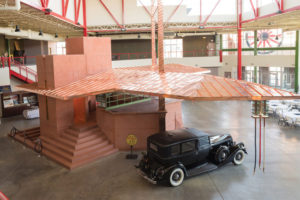
Finally, while researching for this article I came across a gas station concept that was designed in 1927 by Frank Lloyd Wright. His design was never used until a model was built in 2014 at the Buffalo Transportation Pierce-Arrow Museum. Wright’s design imagined the gas station as a comfortable, enjoyable, even civilized destination.
While Wright’s vision never became reality, I have high hopes that the future of mega-recharging centers will actually live up to his vision from the 1920s.

